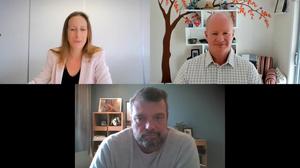The majority of advertising, marketing and media professionals are ‘uninformed’ about the media consumption habits and attitudes of ‘normal’ Australians, according to findings in ThinkTV’s first AdNation 2017 study.
The new report found Australians consider TV advertising to be the most liked, trusted and memorable form of advertising and the one that draws the most attention to brands people have not heard of. Advertising professionals, on the other hand, comprising creative agencies, media agencies, media owners and industry bodies, are fixated on social media, and largely overestimate social media and subscription video-on-demand (SVOD) use among normal Australians.
Compared with the average Australian, ‘AdLand’ professionals are younger, less likely to have children, nearly three times more likely to have a gym membership, and are more than twice as likely to be single and live in a share house. They are more time-poor and working twice as many hours at the expense of watching TV, listening to radio, or spending time with family and pets.
The goal of the study was to analyse the cultural differences between the average 'Australian Joe' and inhabitants of the media, marketing and advertising bubble, and help eliminate projection bias typical in the industry.
Marketing academic professor, Dr Karen Nelson-Field, surveyed more than 1600 AdLand professionals and more than 1000 ‘normal’ people to identify differences and similarities in the two groups’ lifestyles and their usage of - and attitudes towards - different media.
“Even as someone who operates in media circles, I was surprised at the level of disconnect between the media group and the reality of normal Australians,” she said. “AdNation is a very important piece of work because it really identifies where the conversation needs to change.”
In terms of preferred forms of advertising, the study found almost twice as many normal people (42 per cent) said they were likely to find advertising they liked on TV compared to AdLand (22 per cent). In contrast, people in AdLand preferred social media as a place to find ads they liked (36 per cent), 16 percentage points more than normal people (20 per cent).
Interestingly, people in AdLand actually agreed with normal people that TV was by far the most likely place to find trusted advertising, and content that would make them feel emotional and stuck in their memory, the study finds.
Normal people also made it clear they see TV as the most likely place to find advertising that draws attention to a product, brand or service they had not heard of. Forty-seven per cent elected TV, two-and-a-half times more than the next media channel, social media, which was chosen by 18 per cent of normal people. In direct contrast, AdLand nominated social media as the most likely medium, with 44 per cent choosing social media, and only 19 per cent selecting TV.
In terms of media usage, AdLand professionals are 22 per cent more likely to have used Facebook in the past seven days, 43 per cent more likely to have used YouTube, 96 per cent more likely to have used Snapchat, 140 per cent more likely to have used Instagram, 161 per cent more likely to have used Netflix, 180 per cent more likely to have used ABC iView, 238 per cent more likely to have used Twitter, 285 per cent more likely to have used WhatsApp, and 314 per cent more likely to have used Buzzfeed.
AdLand types are more likely than normal people to have watched TV in the last seven days (96 per cent to 93 per cent), but AdLand overestimates TV viewing on laptops by 78 per cent. The findings also suggest industry professionals overestimate what percentage of average Australians have used social media and subscription video-on-demand in the previous seven days, and in some cases, by a huge margin.
ThinkTV chief executive, Kim Portrate, said it’s common for the world of marketing, media and advertising to live in a bit of a bubble. She claimed AdNation 2017 “pops the bubble” and enables the industry to take a closer look and have a good laugh.
“But is also makes a serious point. Knowing that people like, feel and do is critical to our success when it comes to growing brands,” she said. “But we also know that our own preferences can lead to projection bias, which ultimately impacts on the spending decisions we make about media.
“AdNation’s 2017’s findings represent a big opportunity for marketers and advertisers to reassess how in touch we are with the reality of everyday Australians. We need to keep their actual media consumption habits front of mind rather than simply using ourselves or our friends as a sample of one or a few.”
Follow CMO on Twitter: @CMOAustralia, take part in the CMO conversation on LinkedIn: CMO ANZ, join us on Facebook: https://www.facebook.com/CMOAustralia, or check us out on Google+:google.com/+CmoAu











